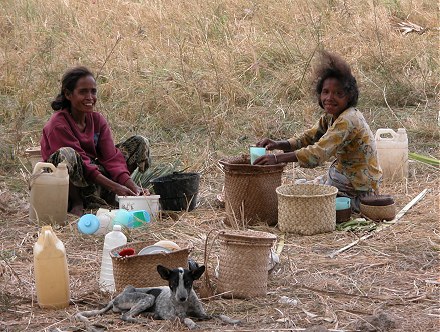At these shops i can get
- very limited varieties of pure cotton fabrics
- heaps of poly cotton mixes
- polyester threads - low quality but good enough?
- pins
- tape measures
- scissors
- treadle machines with electric attachments available.
- overlockers
- small narrow sewing tables (lovingly made by Samuel)
- plastic chairs and stools
- a pedastal fan
- a large cutting table (lovingly made by Samuel)
Here we are around the cutting table on our "official " launch with all the neighbouring women.
 The main product i cant buy locally is the PUL waterproofing fabric. You can see a precious 10m roll on the table above. I bought some from a great shop in Brisbane literally on the way to the airport to fly over to Timor. I think they even gave me a discount! Very nice people!
The main product i cant buy locally is the PUL waterproofing fabric. You can see a precious 10m roll on the table above. I bought some from a great shop in Brisbane literally on the way to the airport to fly over to Timor. I think they even gave me a discount! Very nice people!I also lashed out and bought a great snap press machine from them which is really exciting! It would have been a bit laborious to hammer in hundreds of snaps onto the pads!



